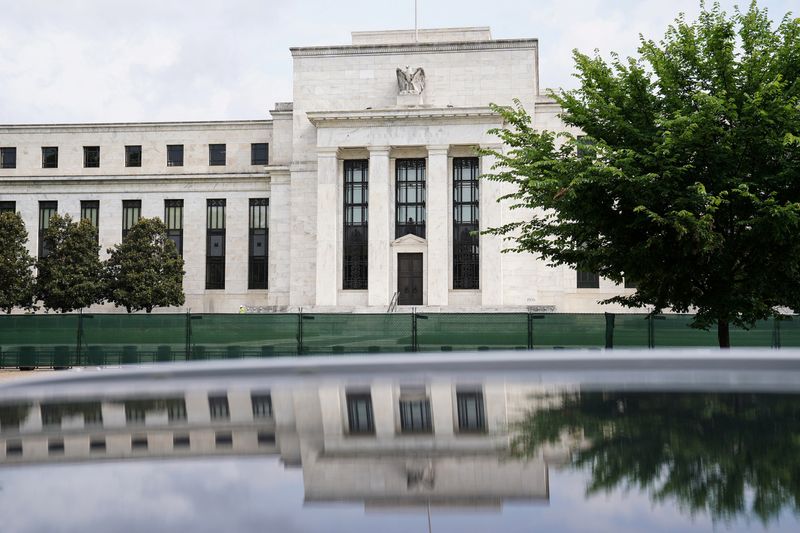Investing.com -- The Federal Reserve kept rates steady on Wednesday, and maintained forecasts for three rate-cuts this year, pointing to the central bank’s confidence that the recent strength in inflation is unlikely to derail the progress made so far.
The Federal Open Market Committee, the FOMC, kept its benchmark rate in a range of 5.25% to 5.5%.
The decision to keep rates steady for the fifth meeting in a row was widely expected as the Fed chair Jerome Powell previously hinted that March was too soon for the members to have enough confidence from incoming economic data to cut rates.
Fed members continue to see the benchmark rate falling to 4.6% next year, suggesting three rate cuts in 2024, unchanged from the prior projection in December. For 2025 and 2026, however, the Fed sees fewer rate cuts, forecasting rates to fall to 3.9% next year and 3.1% in 2026, up from prior forecasts of 3.6% and 2.9%, respectively.
Following the decision, some on Wall Street continued to call for just two cuts this year.
"Our FOMC view is unchanged on this communication. Our baseline case remains for 50 bps of cuts in 2024 and a further 50 bps in 2025. We expect the first cut in July with risks tilted towards a later start date," David Doyle, head of economics at Macquarie said in a note.
The unchanged decision on the rate path for 2024 comes even as Fed members upgraded their forecasts for inflation and growth this year.
The core personal consumption expenditures price index, the Fed’s preferred measure of inflation, is forecast to be 2.6% in 2024, up from a prior forecast of 2.4%. For 2025 and 2026, inflation is estimated to be 2.2% and 2% unchanged from the prior forecast.
The moderate uptick in the inflation outlook for 2024 suggest that recent upside surprise in inflation data haven't yet shaken the Fed's confidence that a stronger economy and labor market aren't likely to spark another wave of inflation.
Fed members now see the economic growth, or gross domestic product, at 2.1% this year, up from a prior forecast of 1.4%, before slowing to 2% in the 2025 and 2026 from 1.8% and 1.9%, respectively.
The labor market, meanwhile, is expected to remain robust, with the unemployment rate seen at 4% this year, down from a prior projection of 4.1%.
"The downward revision to 2024 unemployment to 4.0% makes it likely the job market will soften more rapidly than officials expect," Citi said in a note.
At the press conference that followed the decision, Federal Reserve Chairman Jerome Powell said the fed act sooner on rate cuts if the labor market unexpectedly weakened.
"If there were significant weakening in the data, particularly in the labour market, that could also be a reason for us to begin the process of reducing rates," Powell said.
The Fed chief also said the balance sheet run-off would likely slow "fairly soon," which markets interpreted as as "dovish," Doyle added.
